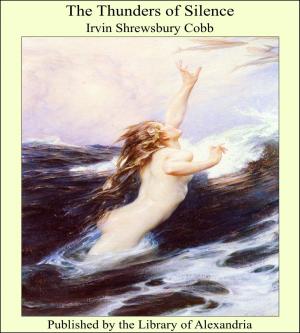At War with Pontiac; Or, The Totem of the Bear: A Tale of Redcoat and Redskin
Nonfiction, Religion & Spirituality, New Age, History, Fiction & Literature| Author: | Kirk Munroe | ISBN: | 9781465624697 |
| Publisher: | Library of Alexandria | Publication: | March 8, 2015 |
| Imprint: | Language: | English |
| Author: | Kirk Munroe |
| ISBN: | 9781465624697 |
| Publisher: | Library of Alexandria |
| Publication: | March 8, 2015 |
| Imprint: | |
| Language: | English |
A glorious midsummer day was drawing to a close; its heat had passed; the tall forest trees, whose leaves were pleasantly rustled by the cool breeze of approaching night, flung a bridge of tremulous shadows across the surface of Loch Meg, and all nature was at peace. The tiny lake, though bearing an old-world name, was of the new world, and was one of the myriad forest gems that decked the wilderness of western New York a century and a half ago. It was embraced in a patent recently granted by the English king to his well-approved servant Graham Hester, whose bravery and wounds had won for him an honorable retirement, with the rank of major in a Highland regiment, ere he was forty years of age. Being thus provided with an ample estate, Major Hester, with his young wife and half a dozen trusty followers, left the old world for the new, and plunged into its wilderness. Though somewhat dismayed to find his property located a score of leagues beyond that of his nearest white neighbor, the major was at the same time gratified to discover in that neighbor his old friend and comrade, William Johnson, through whose diplomacy the powerful Iroquois tribes of the Six Nations were allied to the English and kept at peace. On a crest of land overlooking and sloping gently down to the blue lakelet which Major Hester had named in honor of his wife, he erected a substantial blockhouse of squared timbers. Behind it were ranged a number of log outbuildings about three sides of a square, in the centre of which was dug a deep well. Having thus in a time of peace prepared for war, the proprietor began the improvement of his estate with such success that, within three years from the felling of the first tree, several acres of gloomy forest were replaced by smiling fields. A young orchard was in sturdy growth, a small herd of cattle found ample pasturage on the borders of the lake, and on all sides were evidences of thrift and plenty. The military instinct of the proprietor caused all forest growth to be cleared from a broad space entirely around the rude fortress that held his life's treasures; but within the enclosure he left standing two superb oaks. These not only afforded a grateful shade, but gave a distinctive feature to the place that was quickly recognized by the surrounding Indians. Thus they always spoke of it as the house of the two trees, or two-tree house, a name that soon became "Tawtry House," under which designation it was known from the unsalted seas to the tide waters of the distant Shattemuc. Tawtry House not only offered a ready welcome and bountiful hospitality to the occasional hunter, trader, or traveller tempted by business or curiosity into that wild region, but to the Indians who still roamed the forest at will and had established one of their villages at no great distance from it. With these, by the exercise of extreme firmness and an inflexible honesty, Major Hester succeeded in maintaining friendly relations, in spite of their jealousy of his presence among them. At the same time, his wife, through her gentleness and ready sympathy in their times of sickness or distress, gained their deep-seated affection. Although the Iroquois were thus at peace with their English neighbors, there was a bitter enmity between them and the French settlers of Canada, who had espoused the cause of their hereditary foes, the tribes dwelling along the St. Lawrence and on both shores of the great fresh-water lakes.
A glorious midsummer day was drawing to a close; its heat had passed; the tall forest trees, whose leaves were pleasantly rustled by the cool breeze of approaching night, flung a bridge of tremulous shadows across the surface of Loch Meg, and all nature was at peace. The tiny lake, though bearing an old-world name, was of the new world, and was one of the myriad forest gems that decked the wilderness of western New York a century and a half ago. It was embraced in a patent recently granted by the English king to his well-approved servant Graham Hester, whose bravery and wounds had won for him an honorable retirement, with the rank of major in a Highland regiment, ere he was forty years of age. Being thus provided with an ample estate, Major Hester, with his young wife and half a dozen trusty followers, left the old world for the new, and plunged into its wilderness. Though somewhat dismayed to find his property located a score of leagues beyond that of his nearest white neighbor, the major was at the same time gratified to discover in that neighbor his old friend and comrade, William Johnson, through whose diplomacy the powerful Iroquois tribes of the Six Nations were allied to the English and kept at peace. On a crest of land overlooking and sloping gently down to the blue lakelet which Major Hester had named in honor of his wife, he erected a substantial blockhouse of squared timbers. Behind it were ranged a number of log outbuildings about three sides of a square, in the centre of which was dug a deep well. Having thus in a time of peace prepared for war, the proprietor began the improvement of his estate with such success that, within three years from the felling of the first tree, several acres of gloomy forest were replaced by smiling fields. A young orchard was in sturdy growth, a small herd of cattle found ample pasturage on the borders of the lake, and on all sides were evidences of thrift and plenty. The military instinct of the proprietor caused all forest growth to be cleared from a broad space entirely around the rude fortress that held his life's treasures; but within the enclosure he left standing two superb oaks. These not only afforded a grateful shade, but gave a distinctive feature to the place that was quickly recognized by the surrounding Indians. Thus they always spoke of it as the house of the two trees, or two-tree house, a name that soon became "Tawtry House," under which designation it was known from the unsalted seas to the tide waters of the distant Shattemuc. Tawtry House not only offered a ready welcome and bountiful hospitality to the occasional hunter, trader, or traveller tempted by business or curiosity into that wild region, but to the Indians who still roamed the forest at will and had established one of their villages at no great distance from it. With these, by the exercise of extreme firmness and an inflexible honesty, Major Hester succeeded in maintaining friendly relations, in spite of their jealousy of his presence among them. At the same time, his wife, through her gentleness and ready sympathy in their times of sickness or distress, gained their deep-seated affection. Although the Iroquois were thus at peace with their English neighbors, there was a bitter enmity between them and the French settlers of Canada, who had espoused the cause of their hereditary foes, the tribes dwelling along the St. Lawrence and on both shores of the great fresh-water lakes.















